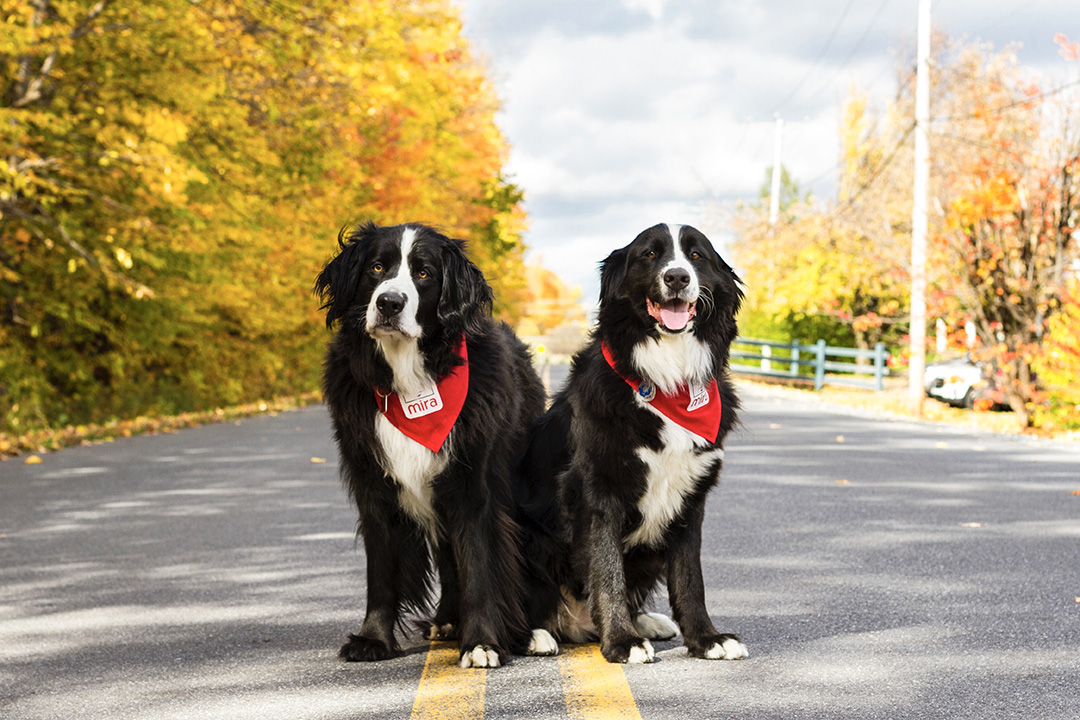Dogs can help children with cerebral palsy walk and gain self-confidence and independence, according to new research by the University of Saskatchewan (USask).
A team of researchers, physiotherapists and veterinarians at USask are studying how large rehabilitation dogs can help improve the mobility, balance and well-being of children living with cerebral palsy.
Cerebral palsy is a neurological condition that can affect movement and overall mobility. The study, awarded $50,000 by the Saskatchewan Health Research Foundation (SHRF), has the potential to reduce health-care costs and improve the lives of many people living with cerebral palsy in Saskatchewan.
Sarah Donkers, a physiotherapist in USask’s School of Rehabilitation Science, has found that service dogs can be more effective than walkers or canes in improving gait and mobility for some children—and more enjoyable. Donkers provides physical rehabilitation to young people with cerebral palsy in Saskatchewan and has found Labernese dogs (Labrador retriever-Bernese mountain dog crosses) visibly improve the ability of the children to walk.
“We have seen immediate improvements in children’s walking patterns. We think this may be something to do with the animal having a natural walking rhythm, but this is what we are going to study,” she said. “We want to know how these improvements occur and will be studying many things such as muscle activation patterns. This is an innovative intervention strategy to improve gait, independence, and overall well-being of children living with cerebral palsy.”
The Labernese dogs are not only trained to steady children’s gait by walking alongside them with a harness, but can help them open doors, navigate bumps on the sidewalk, and brace if a child become unsteady.
The holistic study by researchers from USask’s School of Rehabilitation Science, College of Kinesiology, Department of Sociology and the Western College of Veterinary Medicine (WCVM), with community partners including physiotherapists, individuals living with cerebral palsy and Mira, a non-profit organization that trains service dogs, will also research the well-being of the dogs to help improve their care.
Veterinarian Dr. Romany Pinto, a clinical associate in rehabilitation at the WCVM, has been integral to the “animal centred” component of investigating the interaction between the human participants and the dogs.
According to Donkers, a greater understanding of the effect on the dog occurring during the intervention may help better prepare the animal for its work, prevent future injuries and “maximize the dog’s welfare and working lifespan.”
“The dogs are designed to replace some of the walking aids and help with balance training, but they also provide other functions and give people more confidence. They can help navigate real-world environments—like going through a door or assisting in case of a fall—and the dogs may make therapy more enjoyable,” Donkers said.
“The long-term goal is to increase the use of rehabilitation dogs and mobility service dogs in physical rehabilitation and ultimately improve access to these dogs for Saskatchewan residents.”
Donkers and Pinto see many possible implications for this type of research in other working dogs including guide dogs, disability assistance dogs, police dogs and military working dogs.
The research team believe that by analyzing the effect of different types of work in a variety of working dogs, researchers will also gain useful information to help prevent injuries in the dogs, and to help develop standards of care for working dogs that enhance the animal-human interaction.
